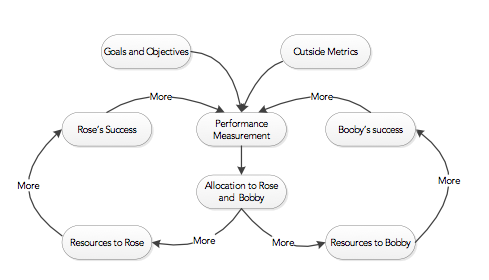The error is that the client relies on performance measurements based on what Rose has done in the past, and is not using any performance measurements based on what Bobby has done in the past. The result is that Rose, complacent in her success, does not foster innovation. Because Bobby was always seen as a “marginal” performer in the company, his ideas were ignored until he left. Now, given industry changes, your client recalls that some of Bobby’s ideas for the business would, actually, have given the business a competitive advantage if they had listened to him.
An alternative is to integrate a measuring system for allocation of resources between Rose and Bobby that takes into account the goals and objectives of the company and outside metrics based on industry, market, and other trends.
1. Diagnostic Action Steps:
2. Drafting for Prescriptive Actions
Conclusions
Matthew F. Erskine is principal of The Erskine Company LLC, a strategic advisory firm located in Worcester, Mass., that offers expertise in the management of unique family assets, including multimillion dollar family businesses, numismatics collections, fine art and Americana collections, commercial and residential real estate holdings, and family compounds. For more information, visit www.erskineco.com.
a. Investigate historical origins of competencies; identify potential complacency traps.
b. Investigate initial conditions and the origins of “rules”.
c. Evaluate the current measurement systems; are they set up to favor current family/business systems over alternatives?
d. Map internal views of family/business success. What are the operating assumptions of “success”?
e. Obtain external views of family/business success. Ask “outsiders” for alternative strategies.
f. Assess the effects on the family/business innovative spirit. Is the current system excluding or limiting the spirit of experimentation that will lead to new alternatives?
g. Continually scan for gaps and areas of improvement.
a. Evaluate the current measurement systems to determine if they are set up to favor the established practices over alternatives.
b. Identify the goals and objectives that will refocus on the definition of success to the broader Family/Business system.
c. Calibrate internal views of success against external indicators to identify potential competency traps.
These broad, generic examples fail to reveal important variables that are part of the real family and real business organizations. Your skill will identify the specific leverage points for sustainable change to behavior at an individual or organizational level. Care must to be taken in applying modeling to Family/Business systems in too technical a manner. There is a wide variety of ways that the individuals within the family and the business can behave within the scope of these models. Modeling is useful for communication, vision, and testing, and general prescriptive decisions by those outside of the Family/Business system. For those inside the system, modeling reveals the specific leverage points to make sustainable changes to the behavior of individuals within the system in a more abstract manner, thereby avoiding some of the risk likely of dysfunctional behavior in the future.








